Bhutan
Bhutan, officially the Kingdom of Bhutan is a landlocked country in South Asia. Located in the Eastern Himalayas, it is bordered by the Tibetan Autonomous Region of China in the north, the Sikkim state of India and the Chumbi Valley of Tibet in the west, the Arunachal Pradesh state of India in the east, and the states of Assam and West Bengal in the south. Bhutan is geopolitically in South Asia and is the region's second least populous nation after the Maldives. Thimphu is its capital and largest city, while Phuntsholing is its financial center.
The country's landscape ranges from lush subtropical plains in the south to the sub-alpine Himalayan mountains in the north, where there are peaks in excess of 7,000 metres (23,000 ft). Gangkhar Puensum is the highest peak in Bhutan, and it may also be the highest unclimbed mountain in the world. The wildlife of Bhutan is notable for its diversity.

History of Bhutan
Founded in early 2000 B.C., Bhutan was known by many names. Some of the names included Lho Jong, Lho Mon Kha Shi, Lho Jong Men Jong, and more. During the 17th century, it became officially known as Druk Yul, the "Land of the Drukpas". Drukpas referred to the religion of Buddhism that the people began to practice, which is now the dominant religion of the country. Previously in the 7th century, Bonism was the religion in Bhutan until the Tibetan King Songtsen Gampo and Guru Rinpoche introduced and taught the people the details of Buddhism.
Ngawang Namyel, the first Zhabdrung, established his power after he arrived in 1616 A.D. He defeated several Tibetan armies and unified battling Bhutan tribes. He started a governing system that was followed until his death. The system broke down and infighting began. A new system of government began with the establishment of a monarchy. The first Druk Gyalpo, or Dragon King provided rules for Bhutan citizen to have a better way of life. In 1971, Bhutan officially became a participating member of the United Nations.
Places of Interest
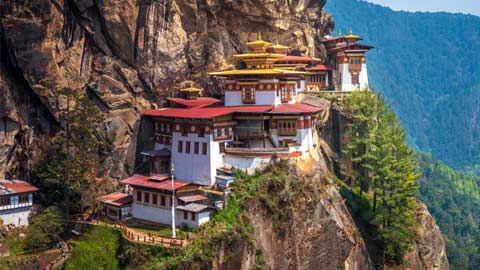 Tiger's Nest
Tiger's Nest
Also known as Taktsang, is said to be the most spiritual place in Bhutan. The temple sits on the edge of a mountainside above the Paro Valley. The walk is 3,000 feet over the valley where you can experience the peaceful and tranquil Bhutan landscape. The temple was built to commemorate Guru Rinpoche. He came to that location the back of a flying tigress. After meditating for 3 years, Rinpoche worked to convert the Bhutan people to Buddhism.
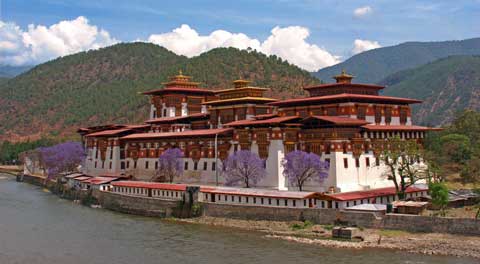 Punakha Dzong
Punakha Dzong
Surrounded by Jacaranda trees, the Punakha Dzong is one of the most beautifully crafted dzongs in Bhutan. It was the second dzong built in the kingdom as its capital. Later in the 1950’s, Thimphu became the country’s capital city. The Punakha Dzong rests on the edge of the convergence of the Mo Chhu and Pho Chhu Rivers. Over the years, a flood, an earthquake, and several fires have damaged he fortress, but it continues to be rebuilt with its ancient architectural integrity.
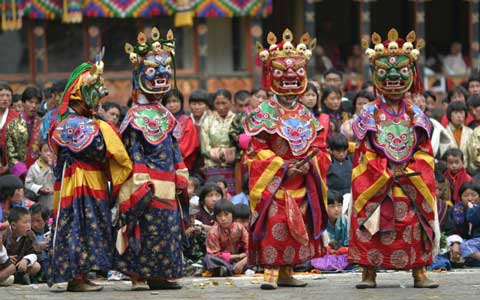 Festivals/Tshechu
Festivals/Tshechu
Tschechus are religious festivals honoring Guru Rinpoche. Families gather to receive blessings and enjoy masked dancers as well as other performers that entertain the crowd. The festivals are held in several dzongs and goembas throughout the year. One of the most popular is the Punakha Tshechu and Drubchen, which is the only festival that reenacts the 1634 Battle of the Five Lamas.
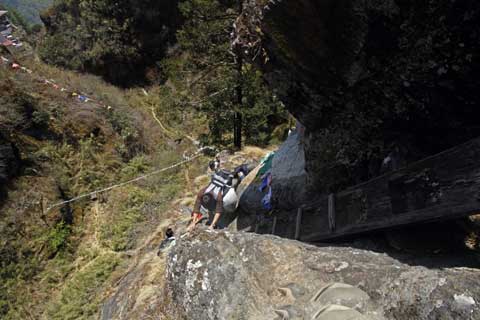 Bumdra Trek
Bumdra Trek
Bhutan offers a 2 or 3-day trek to the Bumdra Monastery. This guided tour is complete with the addition of a cook, assistant, and horses to carry your belongings. Starting at the Sang Choekhor Buddhist College, you will journey through a clearing that holds magnificent views of the Bhutan valleys and mountaintops. The first night will be spent in The Cave of a Thousand Prayers, which is just beneath the Bumdra Monastery. Visit the monastery and then travel on down the mountain to the Taktsang Monastery and on to the Paro Valley.
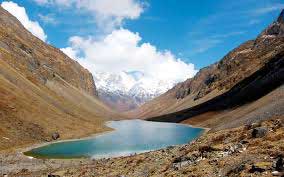 Soi Yaksa Trek
Soi Yaksa Trek
This trek is a 12-day tour of the Bhutan Kingdom. The trekking level is moderate, meaning that some of the terrain is smooth and easily travelled, while other parts are quite arduous. Reaching elevations of 4700 meters, you will explore wildlife, mountain peaks, and ancient temples.
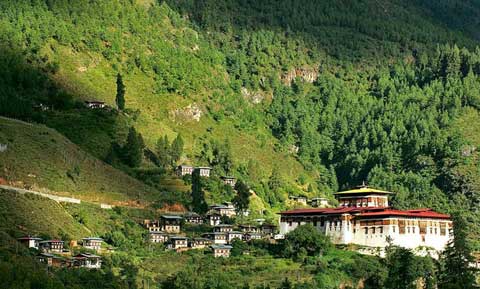 Bumthang Valley
Bumthang Valley
Bumthang Dzongkhag is a massive region that is made up of the Choekhor, Tang, Chhume, and the Ura Valleys. Choekhor Valley is the largest of the region as is considered the Bumthang Valley. This peaceful valley is filled with apple orchards, dairy farms, potato patches, and rice and buckwheat fields.
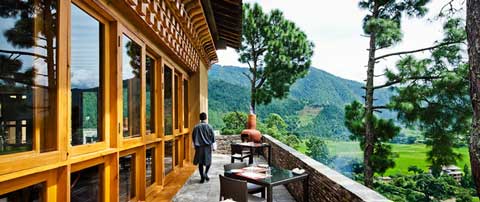 Uma Punakha
Uma Punakha
The Uma by COMO Punakha is a resort style retreat that offers 11 luxury rooms with exquisite views of the Punakha Valley. The hotel contains a romantic restaurant with intercontinental and traditional Bhutanese cuisine and a luxurious spa with relaxing hot stone bath treatments.
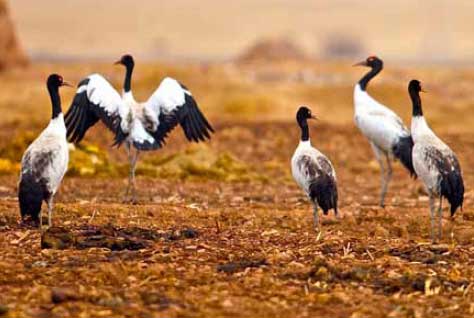 Black-Necked Crane
Black-Necked Crane
The crane is a wildlife creature that comes to the Phobjikha Valley every winter. It is an endangered species and is celebrated by the Bhutanese annually with the Black-Necked Crane Festival. This 9-day event is intended to bring awareness to the bird’s importance. The Crane Festival is held on the King’s birthday, November 11th.
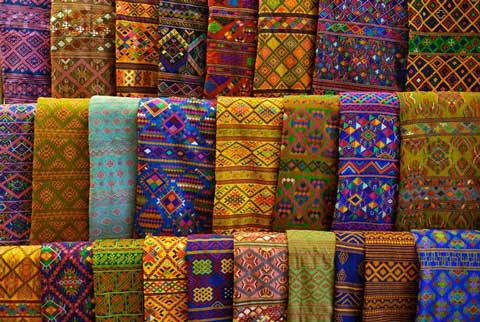 Traditional Textiles
Traditional Textiles
Traditional textiles are generally created by Bhutanese women. The material is handwoven and dyed with intricate patterns making each garment unique. The National Textile Museum is in Thimphu.
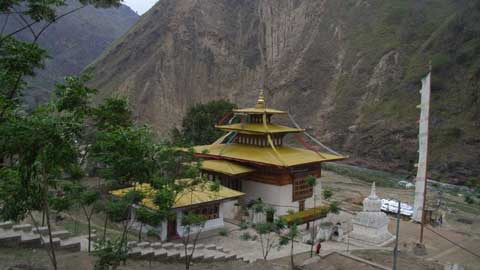 Gom Kora
Gom Kora
The Gom Kora or Gomphu Kora is a beautifully erected temple that is covered with Buddhist carvings. This is the site where the Guru Rinpoche meditated. He left his impressions on a rock. It is said that Rinpoche was meditating in a cave and was so startled by an approaching demon that he left his imprint on a rock. Once he turned into a garuda, he left an imprint of his wings on nearby rocks. Guru Rinpoche struck a deal with the demon to allow him to finish his meditations. The deal was sealed with two fingerprints left on the rocks that can still be seen.